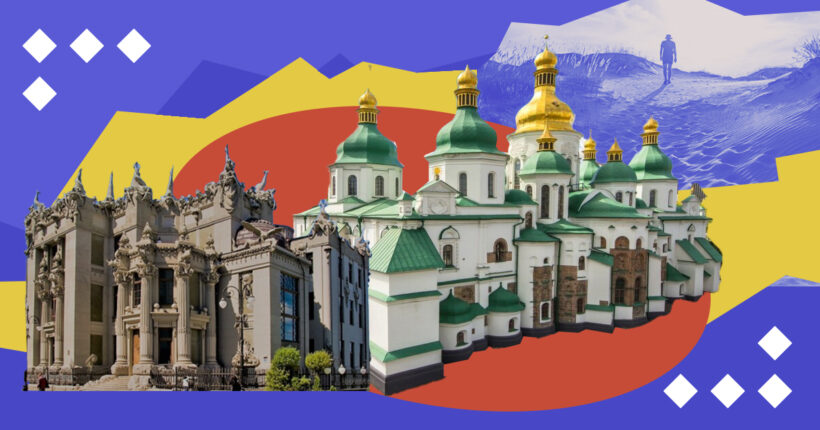
Millions of people across the globe learned about Ukraine through war reports and stories of Ukrainian bravery and resilience in the face of adversity. However, there's much more this country can tell and show beyond news headlines. Rubryka presents the most unusual and beautiful places in Ukraine that will leave you with a lasting impression.
1. Tunnel of Love
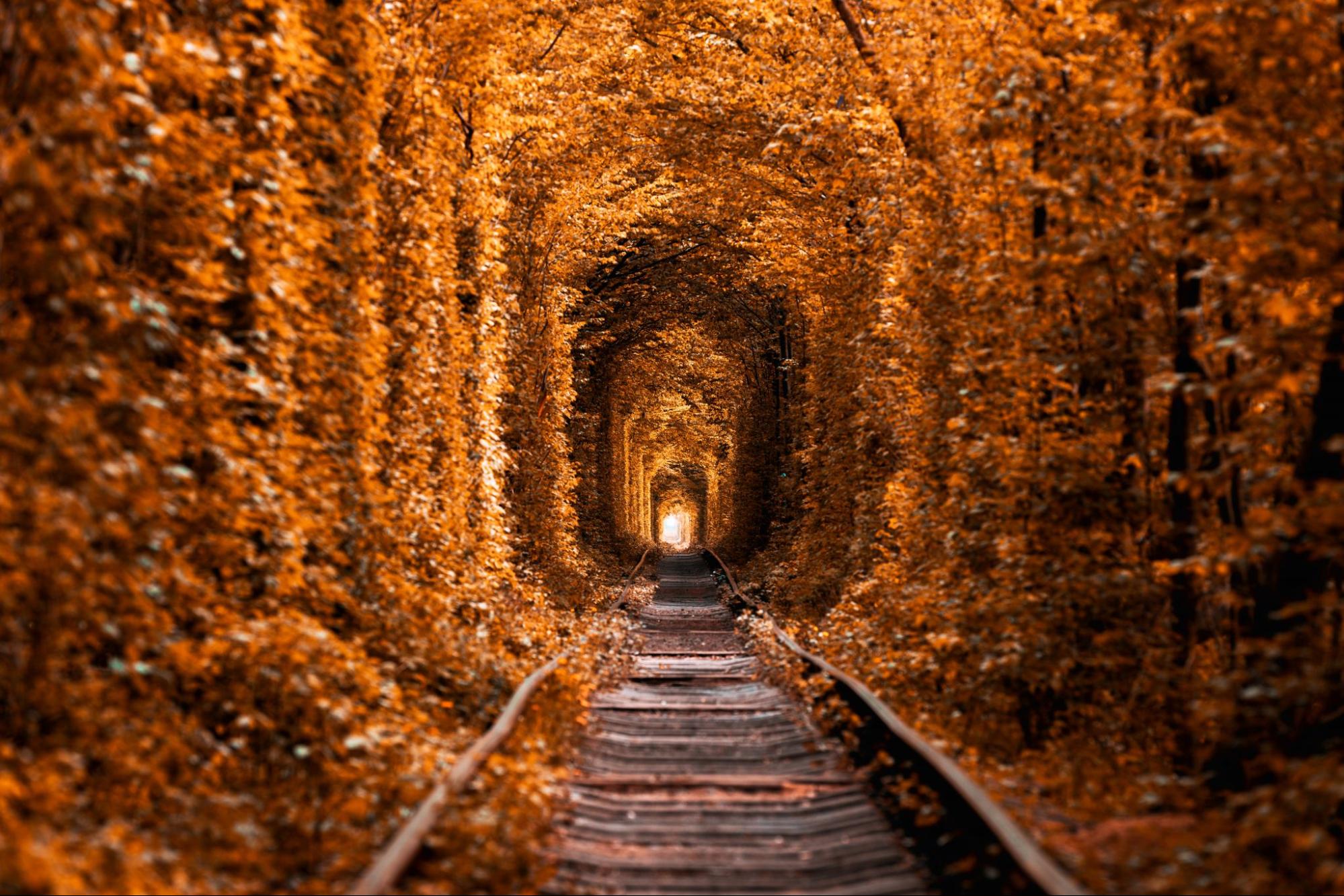
Photo: Deposit Photos
Ukraine is full of natural wonders and captivating experiences. One location in the northwestern Rivne region that combines both characteristics is the Tunnel of Love in Klevan, a medieval village a three-hour drive away from the Polish border.
This natural phenomenon is one of the most beautiful places in Ukraine. It is a four-kilometer section of railway track enclosed by rich greenery — a flawless arch of overhanging trees formed by a running train. This spot owes its name to its romantic atmosphere and has become a favorite place for couples and photographers.
You can walk along the railway track or take a train in the Tunnel of Love and enjoy the charm and beauty of the Ukrainian countryside. Travelers can explore the area all year round to see the changing colors of spring and autumn and the white magic of winter.
Find out more about travel destinations in the region here.
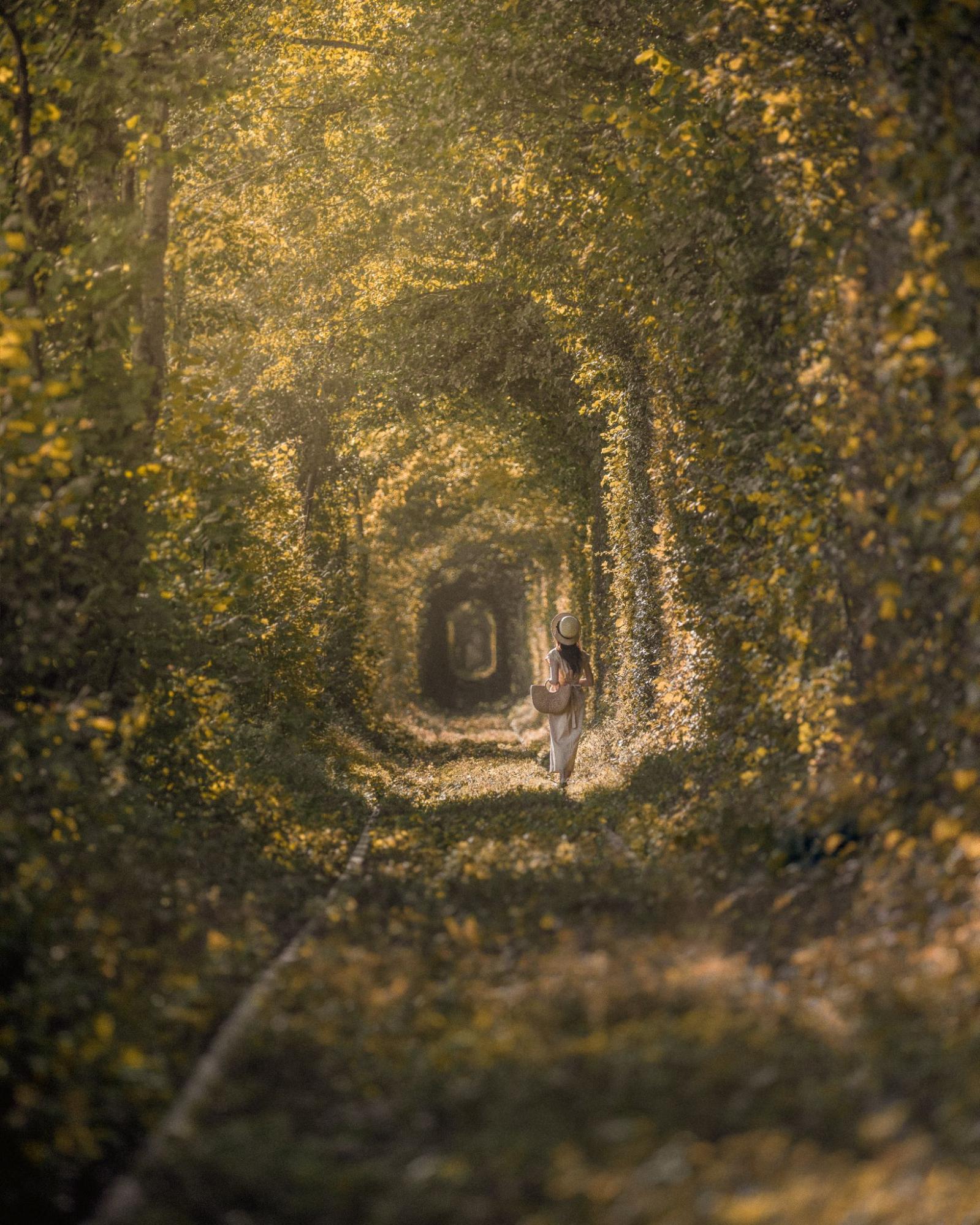
Photo: Maksym Mazurenko
2. House with Chimeras
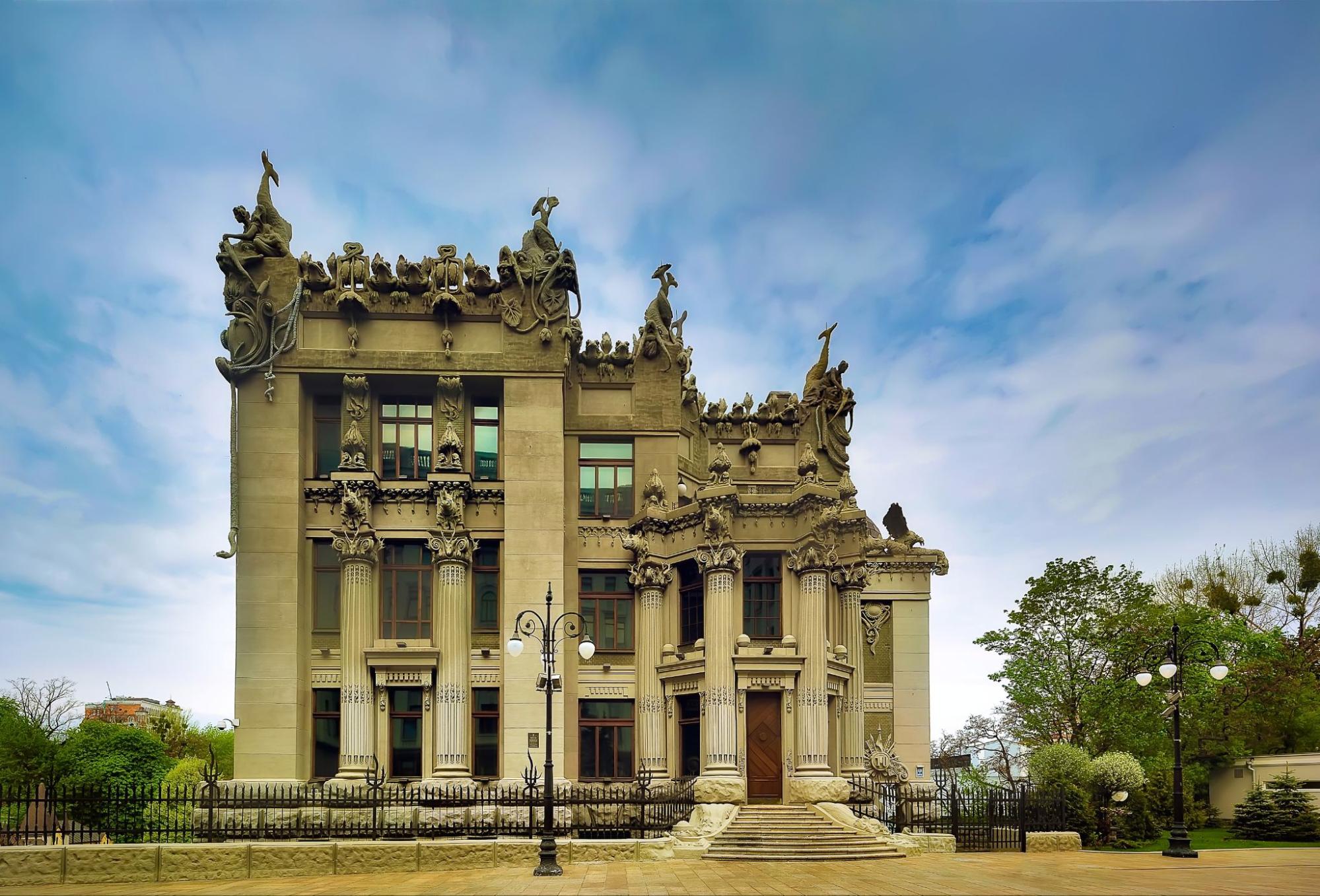
Photo: Ansud/Depositphotos
Located in front of the Ukrainian President's Office, the House with Chimeras is one of Kyiv's most popular tourist attractions. The building, completed in 1902, has witnessed crucial political events and changes in modern Ukraine's history, including the most recent ones, the protests of the Revolution of Dignity and Russia's full-fledged invasion.
The extravagant house was designed by renowned architect Vladyslav Horodetskyi, who blended Art Nouveau, Gothic, and Renaissance Revival elements and created his unique eclectic style. The nature-inspired facade is decorated with many sculptures of fantastical creatures, mythical beasts, such as gargoyles, and underwater beings, "chimeras," which gave the building its name.
The House with Chimeras proves how diverse Ukraine's cultural heritage is, and that Ukrainians are true creatives, making a valuable contribution to modernist architecture. If you're into unconventional design, this landmark will be to your taste.
3. Sophia of Kyiv
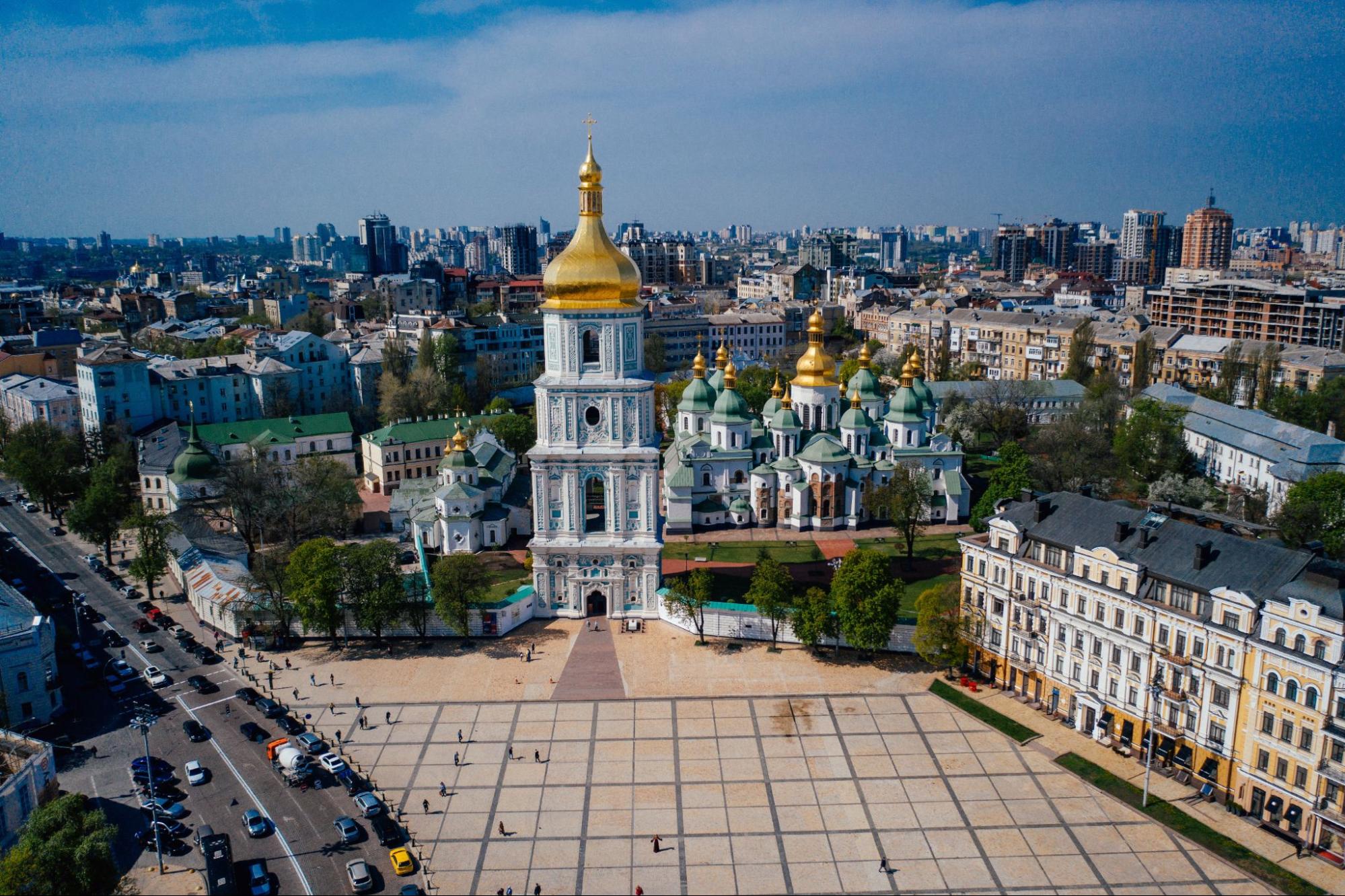
Panoramic aerial view of St. Sophia Cathedral. Photo: Simbiothy/Depositphotos
Kyiv is also the birthplace of one of Ukraine's oldest and most significant spiritual landmarks, with a rich history and exceptional monumental art. St. Sophia Cathedral got its name from Hagia Sophia Cathedral in Constantinople and was at the heart of the religious and political life in the medieval state of Kyivan Rus–Ukraine, helping Christianity spread in Eastern Europe.
This Orthodox cathedral is known as one of the best examples of Byzantine architecture, with its dome roofs, arches, and gold decorations. Inside St. Sophia Cathedral, visitors can see 11th-century-old mosaics and frescoes depicting scenes from the Bible and historical events.
St. Sophia Cathedral, as a vital part of Ukrainian identity and spirituality, is on the UNESCO World Heritage list, making it a must-visit destination for anyone who wants to know more about Ukrainian art, history, and culture.
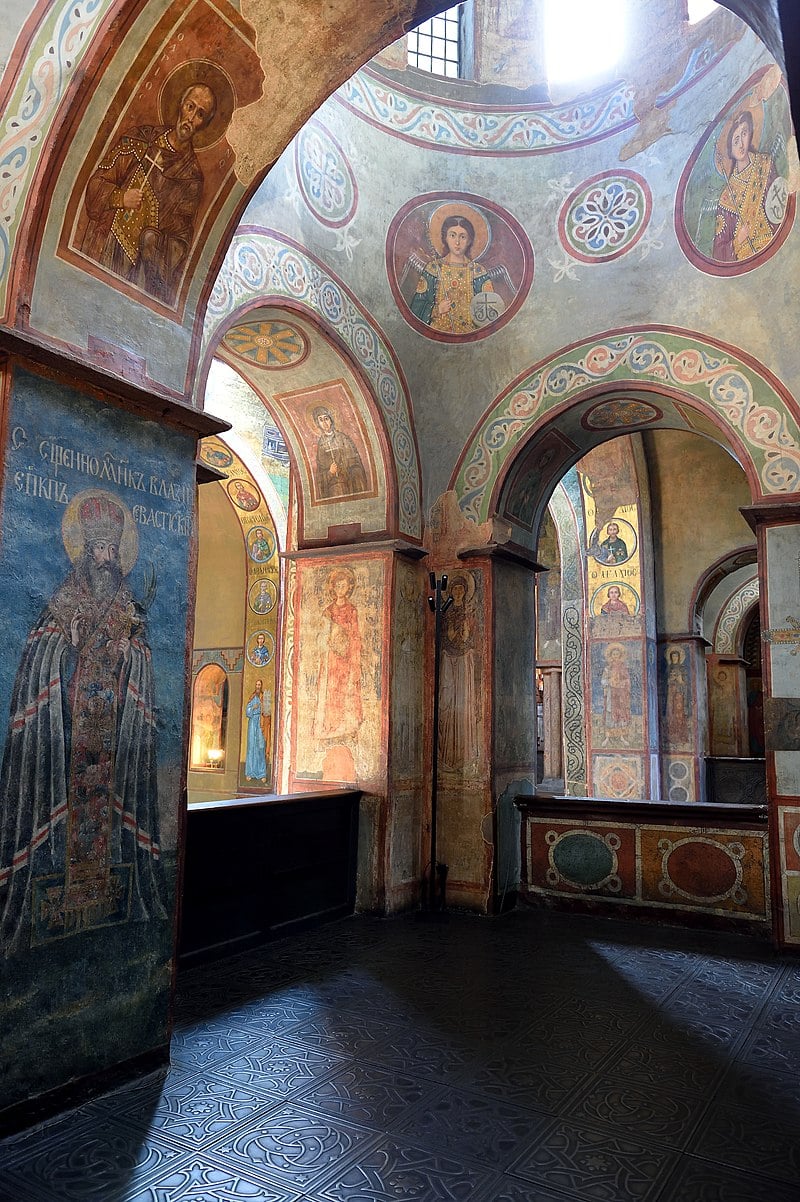
Interior of Saint Sophia Cathedral in Kyiv, Ukraine, August 2019. Photo: Tim Adams
4. Chornobyl
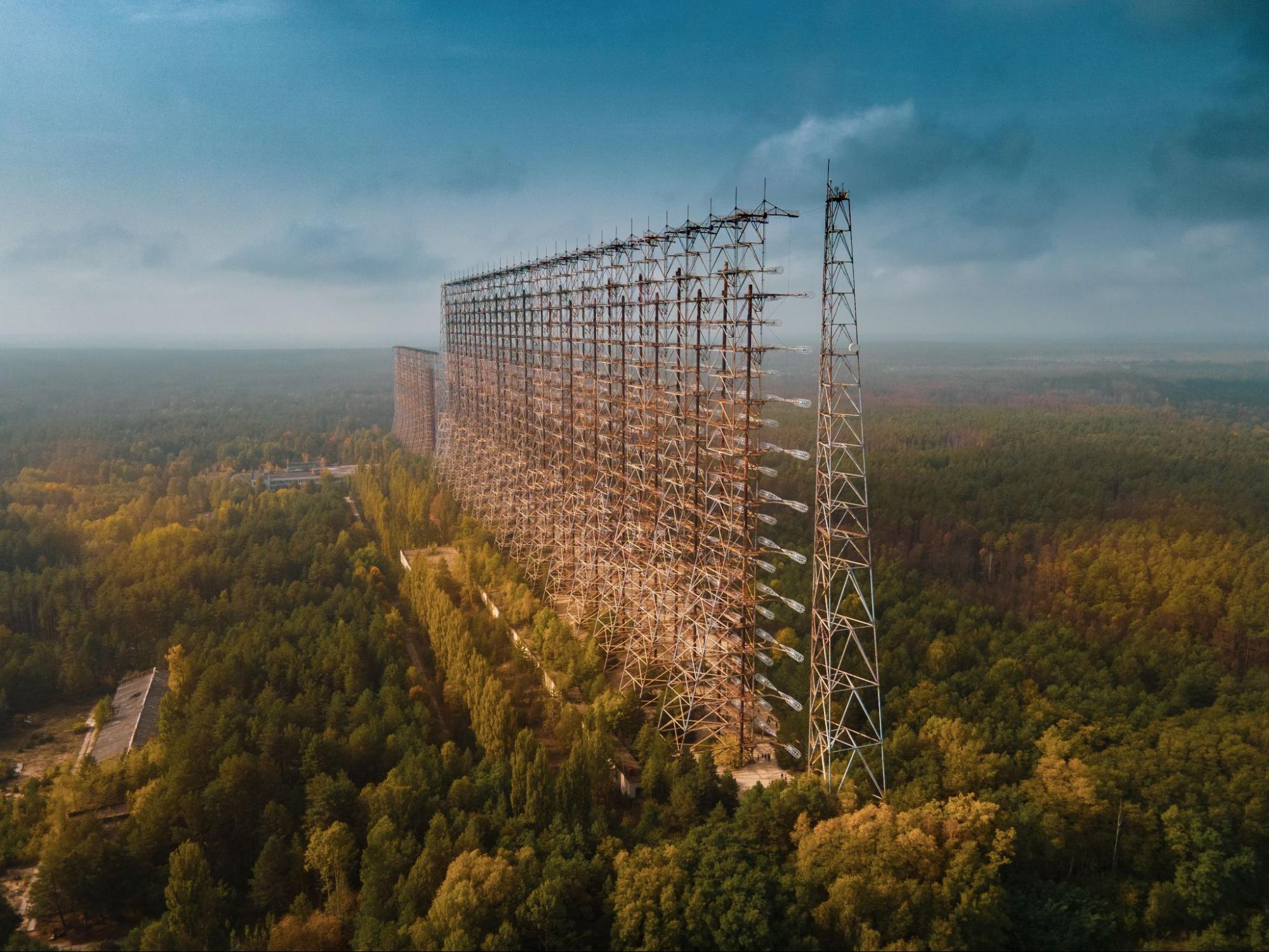
Duga radar in the Chornobyl exclusion zone. Photo: Oksana Yermoshenko
Some places in Ukraine are as unique as they are soul-stirring. The site of one of the most devastating nuclear disasters in history, the town of Chornobyl (often misspelled as "Chernobyl"), offers a glimpse into a post-apocalyptic world just 110 kilometers from the Ukrainian capital, Kyiv.
An area surrounding the 1986 tragedy site is now the Chornobyl Exclusion Zone, a mostly deserted home to frozen-in-time towns and ghost cities, such as Prypiat. Overgrown buildings, empty streets, and sights of the Ferris wheel and abandoned children's toys are surreal to see today.
The exclusion zone, where nature took over and flourished amid former cities, will appeal to photographers and fans of dark tourism. The visit to Chornobyl will definitely provide you with food for thought about the impact of humans on nature.
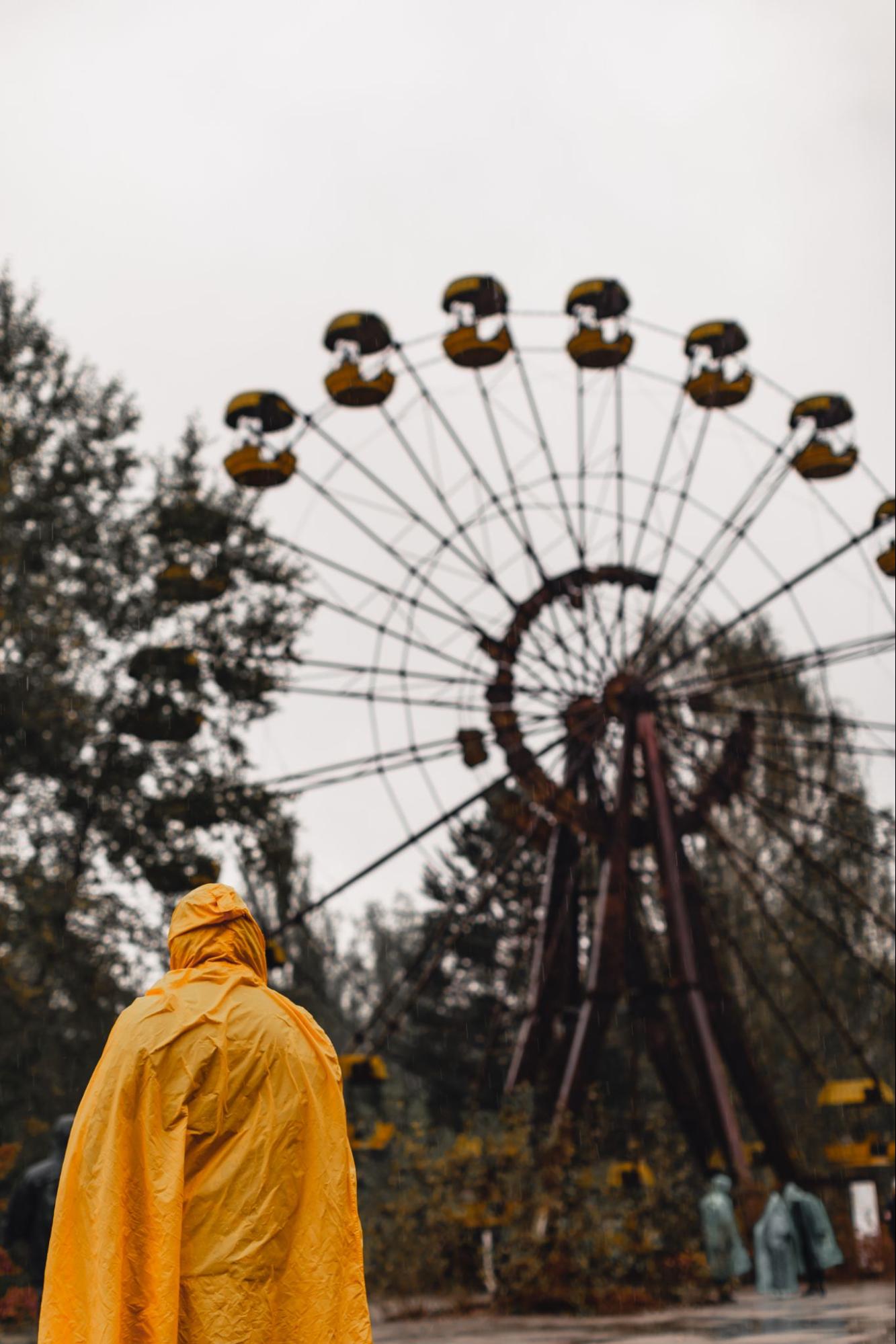
Ferris wheel in the Chornobyl exclusion zone. Photo: Yaroslav Khodan
5. Oleshky Sands

Oleshky Sands, a desert in Ukraine, Kherson region. Photo: Maksym Starepravo
When you think about Ukraine, the image of vast dunes will likely be the last thing on your mind. Despite being known for its fertile lands and the waters and reedbeds of the Dnipro River, the Ukrainian south is an unexpected abode of Europe's largest desert, hidden amid typical agricultural landscapes.
Oleshky Sands — the Ukrainian Dune, located near the namesake town 30 km east of Kherson, easily is one of the most beautiful places in Ukraine. It has a diverse ecosystem of rare plant and animal species adapted to arid desert conditions. Boundless dunes up to 12 m high stretching as far as the eye can see have always wowed travelers, photographers, and locals alike. Specially planted dense pine, acacia, and poplar forests grow around the Oleshky Sands National Natural Park, preventing the spread of sand masses throughout the Black Sea region.
Part of the Kherson region, including Oleshky Sands, has been under Russian occupation since the start of the full-scale war, so the nature and wildlife of the desert have been under threat. Ukrainian soldiers continue fighting for the freedom of the local people on the left bank of the Kherson region, while locals stand firm, knowing that no aggressor can erase their heritage or the enduring Ukrainian culture.

Instagram: @zysko_serhii















